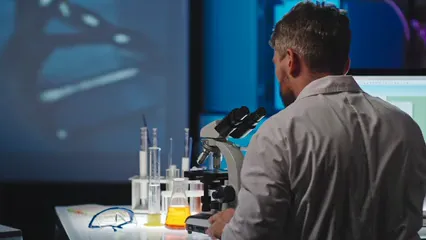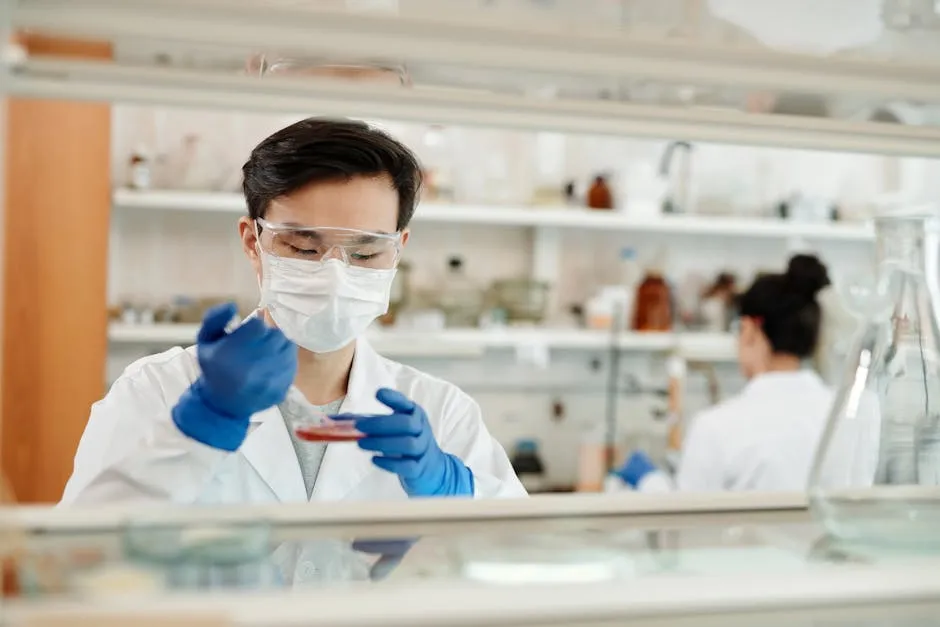Introduction
In a world where even a single strand of hair can reveal secrets about health, lifestyle, and environmental exposure, researchers are tapping into an unusual but effective method: collecting hair samples from brushes. This innovative technique offers a non-invasive way to gather biological material, which has found applications in forensic science, environmental studies, and genetics. However, before you start gathering those precious strands, it’s crucial to navigate the ethical maze governed by Institutional Review Board (IRB) guidelines.
Understanding IRB guidelines is essential in ensuring that research is ethical, respectful, and compliant with legal standards. The collection of hair samples is not just about obtaining data; it’s about protecting the rights and privacy of participants. Researchers must prioritize informed consent, confidentiality, and participant welfare throughout the entire process. This article highlights the significance of adhering to IRB guidelines, exploring best practices for collecting hair samples from brushes irb guidelines, and ensuring that your research stands up to scrutiny.
Before diving into the nitty-gritty of guidelines, let’s talk about the tools that can help with the hair sampling process. You might want to consider using Hair Sample Collection Kits. These kits are designed to ensure that your samples are collected in a sterile and efficient manner, making it easier to maintain the integrity of your research right from the start!

Following IRB guidelines is crucial for ethical research. Learn more about the guidelines for collecting hair samples.
The process of collecting hair samples involves more than just reaching for a brush. It requires careful planning and a structured approach to ensure ethical practices are upheld. Researchers must be transparent about the purpose of the study, how the samples will be used, and any potential risks. By fostering a trusting relationship with participants, researchers can enhance the quality of their data while respecting individual rights.
In this article, we will discuss the importance of collecting hair samples, outline the protocols involved, and emphasize the necessity of following IRB guidelines. Whether you are a budding researcher or simply curious about this fascinating field, you will gain valuable insights into the world of hair sample research. Let’s unravel the ethical considerations and best practices to ensure your research is as robust as it is respectful.
Summary
Collecting hair samples from brushes is more than just a novel method; it opens doors to understanding complex biological questions. This technique has significant applications in various fields, from identifying individuals in forensic investigations to analyzing long-term exposure to environmental toxins. Hair samples are not only a rich source of information but also serve as a bridge between ethical research practices and scientific inquiry.
However, the importance of adhering to IRB guidelines cannot be overstated. Researchers must ensure informed consent, maintain participant confidentiality, and carefully consider the ethical implications of their work. This article will cover key aspects such as the necessity of transparency with participants, the importance of risk assessment, and the protocols required for ethical research. For a comprehensive overview, refer to our summary statistics table.

And speaking of tools, don’t forget about the importance of Laboratory Safety Equipment. Keeping your workspace safe is as vital as collecting the right data. After all, a lab accident could lead to data that’s more “hair-raising” than educational!
Understanding the key aspects of summary statistics is vital in research. Explore our comprehensive guide to summary statistics tables.
Readers will learn about the significance of hair sample analysis across scientific disciplines, the essential protocols for ethical research, and the potential consequences of failing to comply with IRB standards. With appropriate tools and protocols in place, researchers can successfully navigate the complexities of hair sample collection while safeguarding the rights and dignity of their participants. By doing so, they can contribute valuable insights to science while upholding the highest ethical standards.
Speaking of valuable insights, consider diving deeper into the world of Forensic Science Books. They can provide foundational knowledge and cutting-edge techniques that will help you make sense of your findings!

IRB Guidelines for Research Involving Hair Samples
When it comes to collecting hair samples from brushes, adhering to Institutional Review Board (IRB) guidelines is paramount. These guidelines exist to protect participants and ensure that research is conducted ethically. Let’s unpack some essential considerations and the importance of securing IRB approval.
Key IRB Considerations
– Informed Consent: This is the cornerstone of ethical research. Researchers must provide ample information to participants about the study’s purpose, procedures, and potential risks. Think about it: would you jump into a pool without knowing how deep it is? Participants deserve transparency. A well-crafted consent form should clearly outline what is expected, how their hair samples will be used, and any risks involved. Participants should also know they can withdraw at any time without facing negative consequences.
– Confidentiality: Protecting participants’ identities is not just a good practice; it’s a legal requirement. Researchers must implement robust measures to safeguard personal information. Hair samples can reveal sensitive data, including genetic information. Anonymizing data—using codes instead of names—helps protect participant privacy. It’s like wearing a disguise at a fancy party; you want to enjoy yourself without revealing your true identity.
– Risk Assessment: Researchers must evaluate the potential risks versus benefits of their studies. This involves a thorough examination of any physical or psychological risks associated with hair sample collection. For instance, while collecting hair from brushes is generally non-invasive, participants may feel uncomfortable about their biological material being used for research. Balancing the scales of risk and benefit is essential to maintaining ethical standards.
– Monitoring and Reporting: Continuously overseeing the research process is crucial. Researchers should have mechanisms in place for monitoring the study and reporting any adverse events to the IRB. This ensures that any unexpected issues are addressed promptly. If something goes wrong, it’s better to report it sooner rather than later, like spotting a leak in a boat before it sinks.

Importance of IRB Approval
– Ethical Oversight: The IRB acts as a guardian of ethical research practices. It ensures that participants are protected from harm and that their rights are respected throughout the study. This oversight is crucial to fostering trust between researchers and participants.
– Credibility: Studies with IRB approval carry more weight in the scientific community. They are seen as more credible because they adhere to established ethical standards. This approval can make the difference when presenting findings to stakeholders or funding bodies.
– Funding Opportunities: Many funding agencies require IRB approval as part of their application process. Without it, researchers may find themselves locked out of potential funding sources. It’s like trying to enter an exclusive club without the proper credentials; you may be left standing outside.
Securing IRB approval is not just a box to tick; it’s a commitment to conducting responsible research. By prioritizing informed consent, confidentiality, and risk assessment, researchers can ensure that collecting hair samples from brushes is done ethically and effectively.
Research involving human subjects is delicate. Following IRB guidelines not only protects participants but also enhances the overall quality and credibility of the research. By doing so, researchers can contribute valuable insights to fields such as forensic science, genetics, and environmental studies, all while upholding the principles of respect and integrity. Remember, every strand of hair tells a story—let’s make sure those stories are told ethically.

Documentation and Storage
When collecting hair samples from brushes, meticulous documentation and proper storage are vital. Researchers must maintain a detailed log of collection details, including date, time, participant information, and sample conditions. This log acts as a roadmap for the research process, ensuring traceability and accountability.
Consider using a standardized template for documentation. This helps streamline the process and guarantees that no critical information gets overlooked. Each entry should include:
- Date and Time: Record when the sample was collected.
- Participant ID: Use a unique identifier to protect participant privacy.
- Location: Mention where the collection took place.
- Sample Condition: Note any observations about the quality of the sample collected.
This meticulous logging not only aids in data integrity but also enhances the credibility of the research.
Now, let’s talk about storage. Proper storage techniques are essential for preserving the quality of hair samples. Hair can degrade if not stored correctly, leading to unreliable results. Here are some key practices:
- Use Sterile Containers: Store hair samples in clean, labeled containers. Avoid plastic bags that can trap moisture; use breathable materials like paper envelopes instead.
- Control Temperature and Humidity: Keep samples in a dry, cool environment. Fluctuations in temperature or humidity can alter the sample’s integrity over time.
- Limit Exposure to Light: Store samples away from direct sunlight. Ultraviolet light can degrade biological materials, compromising their quality.
- Secure Storage: Ensure that only authorized personnel have access to the samples. This protects against tampering or accidental damage.
- Document Storage Conditions: Note the conditions under which samples are stored. Regular checks can help ensure that the environment remains stable.
By following these best practices, researchers can ensure that the hair samples collected from brushes retain their quality for future analysis. Proper documentation and storage not only uphold the integrity of the research but also safeguard the well-being and privacy of participants involved.

And don’t forget to keep your samples safe with Privacy Locks for Lab Storage. After all, you wouldn’t want any curious hands getting into your valuable samples!
Chemical Analysis
Chemical analysis of hair samples collected from brushes can provide valuable insights, particularly in forensic and toxicological studies. Two key methods employed in this analysis are mass spectrometry and gas chromatography.
Mass spectrometry (MS) is a powerful technique that allows researchers to identify and quantify various substances within hair samples. By breaking down the hair’s chemical composition, scientists can detect the presence of drugs, toxins, or heavy metals that an individual may have been exposed to over time. Imagine a detective piecing together clues from a crime scene; mass spectrometry helps to unravel the chemical story behind each hair strand. This method is particularly useful in forensic investigations, where determining a person’s exposure to illicit substances can make all the difference in a case. If you’re interested in diving deeper, check out some Mass Spectrometry Books to expand your knowledge!

Gas chromatography (GC), on the other hand, focuses on separating volatile compounds within hair samples. This technique is instrumental in analyzing environmental pollutants or substances absorbed into the hair shaft. For example, GC can reveal long-term exposure to pesticides or heavy metals, shedding light on an individual’s environmental history. When combined with mass spectrometry, these two methods create a robust analytical framework that can detect specific compounds with high precision. This duo is like Batman and Robin in the world of chemical analysis—each powerful alone, but together, they’re unstoppable.
DNA Analysis
When it comes to hair samples, DNA analysis is a game-changer. Two techniques stand out in this realm: polymerase chain reaction (PCR) and DNA sequencing.
PCR is a method used to amplify specific DNA sequences found in hair follicles. Think of it as hitting the “copy” button on your printer but for genetic material. This technique allows researchers to take minuscule amounts of DNA and produce millions of copies, making it possible to analyze genetic material that would otherwise be too scarce for study. This is especially useful in forensic applications where only a few hair strands are available for analysis. If you’re diving into this field, you might want to consider PCR Kits to enhance your experiments.

Following PCR, DNA sequencing provides a detailed readout of the genetic information contained within the hair sample. This process reveals the specific order of nucleotides in the DNA, allowing scientists to identify genetic markers linked to various traits or conditions. For instance, sequencing can help establish familial relationships or provide insights into inherited disorders. Together, PCR and DNA sequencing open a treasure chest of genetic information hidden in those seemingly ordinary hair samples, transforming them into powerful tools for research and investigation.
Conclusion
Collecting hair samples from brushes serves as a vital research method in numerous scientific domains. By adhering to IRB guidelines and implementing best practices in sample collection and analysis, researchers can ensure ethical, reliable, and impactful studies. The significance of informed consent, confidentiality, and rigorous methodology underscores the advancement of scientific knowledge while respecting participant rights.
Hair samples are not simply strands; they are rich reservoirs of information that can provide insights into health, genetics, and environmental exposure. The analysis of these samples through chemical methods and DNA techniques can reveal critical details about an individual’s lifestyle and history.
However, the collection process is not just a straightforward task; it requires careful planning and adherence to ethical guidelines. Researchers must navigate the complexities of informed consent, ensuring that participants are fully aware of how their samples will be used. Confidentiality must be upheld at all times, with strict measures in place to protect personal information.
Moreover, the analytical methods used to assess these hair samples must be conducted with precision and care. Techniques like mass spectrometry and gas chromatography, alongside PCR and DNA sequencing, provide a multifaceted view of the data collected. Each method offers unique insights, enabling researchers to piece together a comprehensive picture of the biological and chemical narratives held within hair strands.
In light of these considerations, researchers are not only contributing to the scientific community but also fostering trust with participants. By prioritizing ethical practices, they ensure that the knowledge gained from hair samples can be used responsibly and effectively. Ultimately, the process of collecting hair samples from brushes exemplifies how science can advance our understanding of human biology while respecting the rights and dignity of individuals involved in research.

FAQs
What are the benefits of collecting hair samples?
Collecting hair samples from brushes opens a treasure chest of insights across various research fields. In forensic science, hair samples help identify individuals involved in crimes or establish connections to crime scenes. Genetic studies utilize hair to explore hereditary traits and genetic disorders. Hair also serves as a long-term record of exposure to environmental toxins, revealing crucial health information. Furthermore, in toxicology, hair analysis can track drug use over extended periods. Researchers can even assess nutritional status and deficiencies through hair composition. The diverse applications of hair samples underscore their importance in advancing scientific knowledge.
What is the role of IRB in research?
The Institutional Review Board (IRB) is the guardian of ethical research practices. Its main function is to protect the rights and welfare of participants involved in studies. The IRB reviews research proposals, ensuring they adhere to ethical standards, including informed consent and participant confidentiality. By providing oversight, the IRB ensures that research is conducted responsibly and that potential risks are minimized. This ethical oversight not only builds trust with participants but also enhances the credibility of the research findings.
How are hair samples analyzed?
Analyzing hair samples involves various techniques tailored to specific research goals. Microscopy allows researchers to examine the physical characteristics of hair, such as color and texture. Chemical analysis techniques like mass spectrometry and gas chromatography identify substances within the hair, revealing information about exposure to drugs or toxins. DNA analysis, including polymerase chain reaction (PCR) and sequencing, provides insights into genetic makeup. Each method serves a unique purpose, contributing to a comprehensive understanding of health, genetics, and environmental interactions.
Why is informed consent important?
Informed consent is the cornerstone of ethical research. It ensures that participants are fully aware of the study’s purpose, procedures, and potential risks before agreeing to participate. This transparency empowers individuals to make informed decisions about their involvement. Participants should feel comfortable asking questions and understanding how their hair samples will be used. By prioritizing informed consent, researchers respect participants’ autonomy and rights, fostering trust and collaboration throughout the research process.
What challenges do researchers face in hair sample collection?
Collecting hair samples from brushes is not without its challenges. Researchers often face difficulties in participant recruitment, especially if individuals have concerns about privacy or the use of their biological material. Sample contamination is another significant issue; environmental factors or improper handling can skew results. Additionally, variations in grooming habits may lead to inconsistencies in the quantity and quality of hair collected. Addressing these challenges requires clear communication, robust protocols, and a commitment to ethical practices to ensure reliable and valid research outcomes.
How can researchers ensure sample integrity?
Maintaining sample integrity is essential for accurate analysis. Researchers should follow strict collection protocols, utilizing sterile tools and containers to prevent contamination. Proper documentation of the collection process helps track samples and maintain a chain of custody. Additionally, samples should be stored in controlled environments, away from direct sunlight and moisture, to preserve their quality. Regular checks on storage conditions can help prevent degradation. By implementing these best practices, researchers can enhance the reliability of their findings and contribute valuable insights to their respective fields.
Please let us know what you think about our content by leaving a comment down below!
Thank you for reading till here 🙂
All images from Pexels




